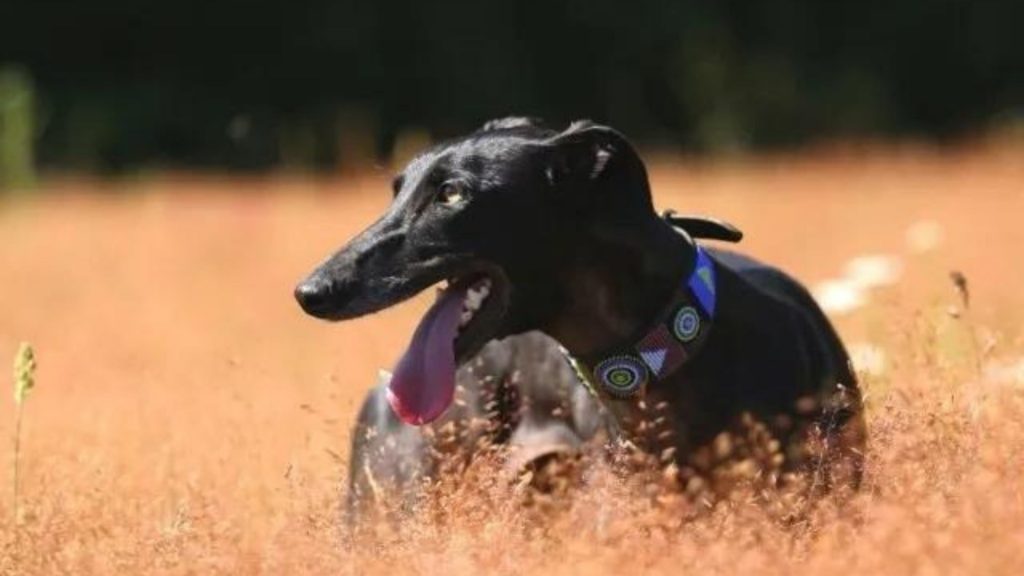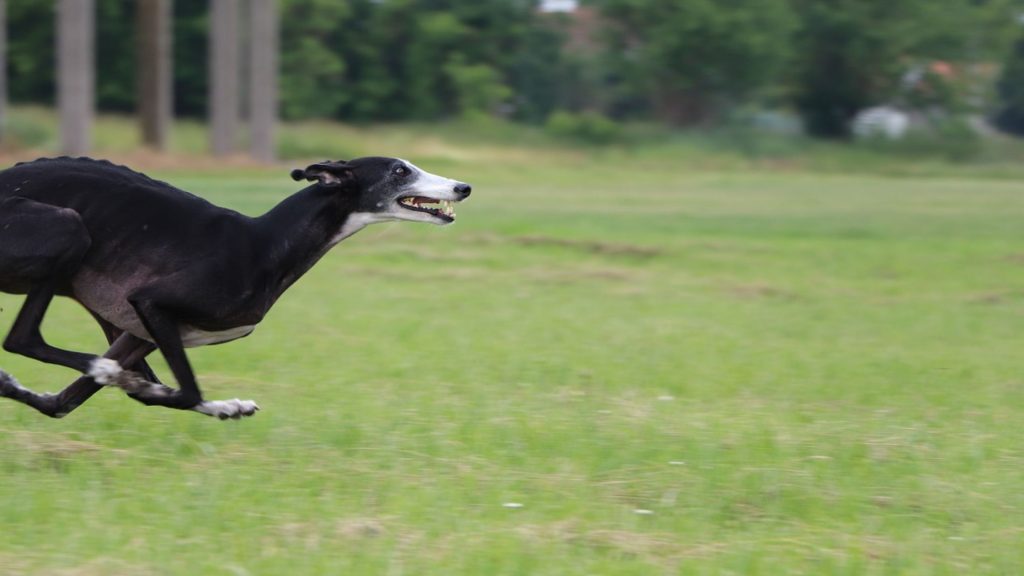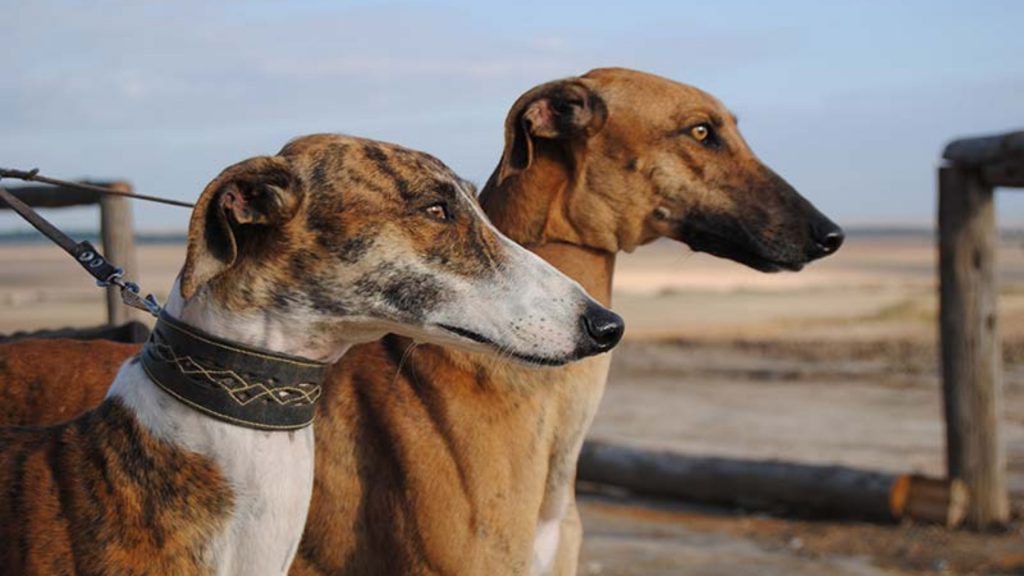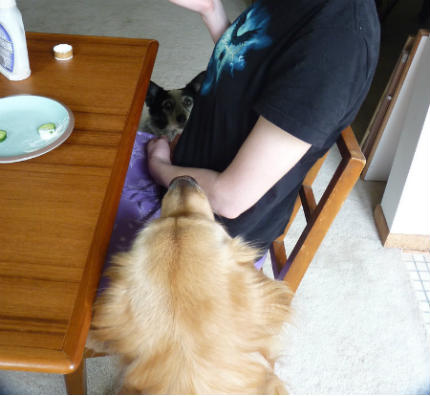If there is a characteristic dog of the Iberian Peninsula, it is the Spanish greyhound , one of the dogs with the oldest lineage that we have in Spain and which is spread throughout the country, although it is concentrated above all in the Central Plateau.
It has always been a hunting dog, and is still used to catch hares on the run, but little by little it is becoming an ideal companion dog for those who exercise a lot.
- Size : 50 to 70 cm at the withers. It is a large breed.
- Weight : between 20 and 30 kilos.
- Hair type : very short and straight. Easy to care for.
- Character : sensitive and docile with its owner, shy and suspicious of others.
- Health : iron.
- Life expectancy : about 12 years.
History of the Spanish Greyhound
As with all dog breeds, its origin is unknown. It is true that there are dogs with a similar morphology in Egyptian paintings, but in them we find dogs that are very similar to the current ones, which does not mean that they came from Egypt.
What does seem to have a greater basis is the Celtic or Roman origin and already in the 2nd century BC. C. Arrian of Nicodemia , who was consul of Baetica, described hunting with greyhounds, the same as that practiced now in his treatise called Cynegeticus.
In it, this consul said that there were greyhounds with hard, short hair (like the current ones) and that in Hispania hunting the hare was a custom of all the inhabitants of the area, even if they were not rich.
The tradition that already existed in Roman times was consolidated as the Reconquista advanced from the north, so much so that in the charters that were given to the conquered areas (a type of codes in which the laws that governed there were recapitulated) theft was punished. of these animals with death.
Leaving aside the sighthounds that we saw in Egyptian paintings, the first representation in which we see a perfectly recognizable Spanish greyhound dates back to the 12th century, where in some mural paintings in a hermitage in a town in Soria (Caltojar) we see a scene of hunt with these dogs.
The breed continued to be very present, so much so that in the 17th century we have a mention in Don Quixote of the “running greyhound”, which means that in rural areas it was an important animal for its inhabitants to have fun and put some food in their mouths. .
Despite having survived so many centuries, and without mixing with other breeds, at the beginning of the 20th century it was on the verge of disappearing due to crossbreeding with a greyhound or English greyhound .
This aberration was due to the fact that dog track racing was very fashionable in England and reached Spain, so a larger and faster dog than the Spanish greyhound was needed.
Luckily, the breed was able to recover thanks to the hunters who preserved the greyhound as it was, because although the crossing with the English made it faster, it turned it into a weak dog for hunting hares in nature, eliminating thus the resistance that is the great asset of this animal in the field.

Characteristics of the Spanish Greyhound
Spanish greyhounds are the type of dog with which there is no possible confusion, because when we see one, even from many meters away, we know that we are looking at one of our most traditional breeds.
Its body is what makes it so recognizable, since it is a tall dog (between 50 and 70 cm), but at the same time very thin , so sharp that it seems like it is going to break, although it is very strong.
In fact, when we get closer we realize that his more than 20 kilos are made of pure fiber and that he is very muscular, although just enough to be functional, since he has been selected for centuries for the purpose of running after hares in open field.
Both the capacity of his lungs and his heart are incredible, since there are few animals that can run at 60 km/h for long distances , which is what a greyhound does when chasing a hare.
As for the colors, having been an animal that has hardly been in exhibitions and that has been used for hunting, in its standard all and in any combination are allowed, although it seems that in recent years the more brindle coats have been prioritized. dark and black.

Character and behavior
We are dealing with a very sensitive dog, which we must take into account when dealing with him, and especially when training him.
He is very affectionate with his owner, as well as with the family , but he is not one of those animals that is always on top of us, because he needs his living space and that is why we will see that sometimes he "goes his own way."
It is not aggressive towards strangers and treats them with caution, without getting too close until it knows them as if it feared something, perhaps as a result of it being one of the worst treated breeds in our country.
They have no problems with other dogs, since they have always lived with many of their breed , so that aggressiveness has never been a desirable characteristic, neither with dogs nor with humans.
We must be a little careful with cats, especially at first, because they can see them as prey to hunt, which will be fatal if they have a little space to develop all their speed.
This behavior changes completely when it goes out into the field, where it becomes a predator that will go looking for its prey, running after all the hares it sees until it runs out or kills one.
The training and education we give it will be of no use if it sees prey , something that we must take into account if we go out into the countryside and know that there are wild animals nearby, since we will not be able to control it.
Health
Your health is iron. Without fear of being wrong, it is possible to say that it is one of the races with the strongest health and this is the result of the selection that has been made.
For centuries they have only bred with the best greyhounds, those who were strongest and those who ran the most , eliminating the weak ones or those who were not able to catch the hares.
This, which seems cruel and which it is, has extended to this day, since it continues to be done this way in the rural world, which has meant that this animal hardly needs a visit to a veterinarian throughout its life.
If they go to a clinic it is almost always the result of a problem due to hunting, since in certain areas they destroy their legs and despite this they continue running.
There are a couple of diseases that affect this breed more and one is bone cancer , against which little can be done at this time and the other is gastric torsion .
Torsion is known to all owners of large and giant breed dogs and it can be prevented by preventing them from drinking a lot of water at once and not feeding them a couple of hours before running or two hours after.
They can live around twelve years, which is a high number if we take into account how big it is, something that tells us that it has unusual health.
Care and feeding of the Spanish Greyhound
Both care and feeding are easy, although you must keep in mind that we are dealing with an athlete, especially if we usually run with him.
What care should be given?
It is essential that you get a lot of exercise, which makes your life in the city complicated . It's not that it's impossible to keep him in an apartment and take him out for walks in the park several times, but he needs to run in open spaces and that's complicated in an urban green area, full of people, dogs and obstacles.
Thus, it is best to have him in a rural area and in them he will always be more comfortable on both plateaus, his natural place where he will have the possibility of running on enormous plains without anything to slow him down.
Of course, you have to be careful where you take it, avoiding areas with olive trees, vineyards, fences, since once it starts running it doesn't look at the ground it's walking on and it can do a lot of damage, so it's a good idea to check its legs. every time we go out with him to the field.
The hair is very easy to care for, since you don't have to do anything. Maybe wipe him with a rubber mitt once or twice a week and the baths can be spaced out a lot in time, since he doesn't get dirty.
You will have to pay more attention to the ears, observing them in case there are any spikes stuck in them and cleaning them regularly with a specific product, otherwise you may contract an infection.
Feeding
The diet is like that of any other dog. We will give him the best quality feed we can afford and we will only have to look for something else if we do a lot of sports daily.
If we take him hunting, during that time it is advisable that he consume a specific food for dogs with high activity , which usually contain a higher proportion of proteins in order to “feed” the muscles.
We will do the same if we go out for a daily run with him for several km, although if he does it at our pace he can eat normal food, something that we will check as his weight fluctuates.

Curiosities of the Spanish Greyhound
It is often said that dogs do not get cold, but that is not the case with our greyhound. Their hair, combined with the fact that they have a very low body fat rate, makes them tremble when the temperatures drop .
It is not unusual for it not to want to go out on the worst days of winter or when it rains, so one of the first accessories we will buy if a greyhound comes home will be a coat, better if it is one that also serves as a raincoat.
The necklace you need is special. Due to their hair type and the shape of their neck, they must be given a collar made with greyhounds in mind, which differs from normal ones in that it is much wider.
We can acquire a handmade one made of leather, which, when well cared for, will last the entire life of the greyhound and gives it a most elegant, majestic appearance, which is perhaps one of the adjectives that best defines the breed.
When he hunts he doesn't see anything other than the hare. This fixation is such that it is not uncommon for dogs to die from heart attacks and exhaustion after spending a long time chasing a hare that resisted. Therefore, we have to be careful with him when we go out into the field.
It is one of the most abused dogs in our country and the one most seen in shelters for adoption . In fact, there are already thousands of specimens in countries like Holland or Germany, where they are horrified when they know what these animals must go through.
Unfortunately, it is still customary to kill them if they have a bad season, get older or get sick, and it is not uncommon to see them abandoned by the towns once the season is closed, although fortunately it is a custom that is being lost.
They have a vision range of 270 degrees, allowing them to see hares even when they leave behind them . This gives it a great advantage when hunting, although luckily for the hares, most hunting trips end with this lagomorph escaping from the dogs and with the fans enjoying a good race.
Given their exercise needs, they usually train using a motorcycle or even tied to car mirrors and adapting their speed to that of the animals.
Other dog breeds that may interest you:












